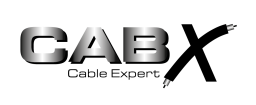Copper in the German Cable Market
In the German cable market copper usually is calculated and charged seperately. The system is confusing for partners from other regions, that is why I try to explain it here.
There are four different basic ways of quoting cables in Germany:
- Basic price without copper („Hohlpreis"): This means the cable is quoted without any copper content. The copper index will be charged additionally according to the actual copper rate on the reference day (which is mostly the day of order confirmation). This way is common in the energy cable market.
- „Copper base 100" means the quoted price contains the copper as if the copper rate were 100€/100kg. The copper index will be charged additionally acc. to the difference between the actual copper rate on the reference date and 100€/100kg. Copper base 100 often is used in telecommunication cables market.
- „Copper base 150" means the quoted price contains the copper as if the copper rate were 150€/100kg. The copper index will be charged additionally acc. to the difference between the actual copper
rate on the reference date and that copper base. Copper base 150 often is used in industrial flexible cables market.
In Austria commonly is used the copper base 130. This works in the same way but using a different base point. The reason is historical due to the different currencies in the European countries before establishing the Euro. - Price including copper („Vollpreis"): A cable is quoted including the full copper content. No copper rate will be charged additionally independent from the actual copper rate. This means a high risk for the manufacturer and thus this way is used just on signal or data cables with a rather low copper content.
The advantage of separating the copper notation from the price is the long term stability and reliability of constant prices for the customer. On prices including copper usually a price validity of three days is given, which often is not enough to generate an order. So when the customer wants to order he needs a daily actual offer. A quotation based on copper 150 usually remains valid for several weeks, the copper surcharge will be adjusted on daily base. In some long term contracts between supplier and customer there is agreed on a monthly copper value. So the purchasing department has enough time to generate the order.
Copper Index:
To fix the copper price on the actual copper rate it is important to know the copper index of the quoted cable. To keep the business easy the copper index for unscreened cables is derived by multiplying the nominal cross section of the cores with 9,6. This factor takes into account the length reduction by stranding as well as the production process related waste as an average. This method allows to offer cables with the same technical performance (conductivity) at comparable price base.
But there are differences in calculating screened cables. There are many opportunities to build up a copper screen giving the same specified screening performance. And so different cable manufacturers will offer screened cables with sometimes huge differences in the copper index.
Finally:
Purchasing unscreened cables everyone is able to check the copper index: add up all the copper cross sections in the cable (in mm²) and multiply the sum by 9,6 and you will get the copper index in kg/km.
Purchasing screened cables you should compare not only the price but also the copper index in the quotations of different suppliers. If the copper screen is optimized to reduce the copper content you probably will get the same EMC performance for a lower price, expressed by a lower copper index.
The actual metal notation for cable business you may find here.


